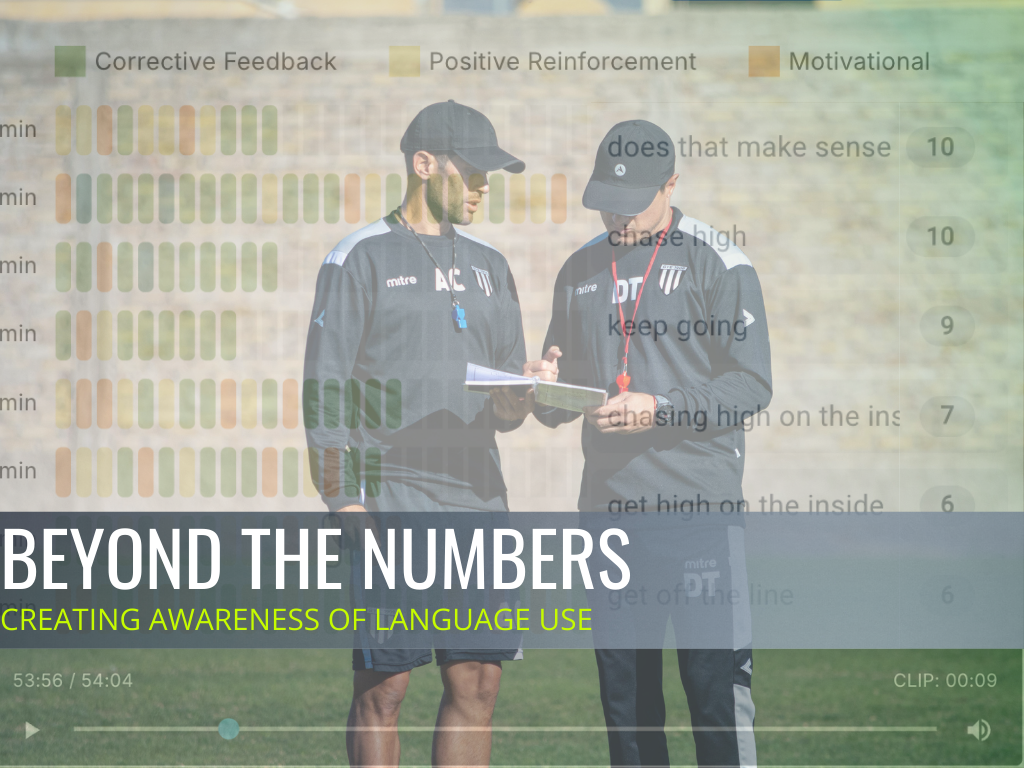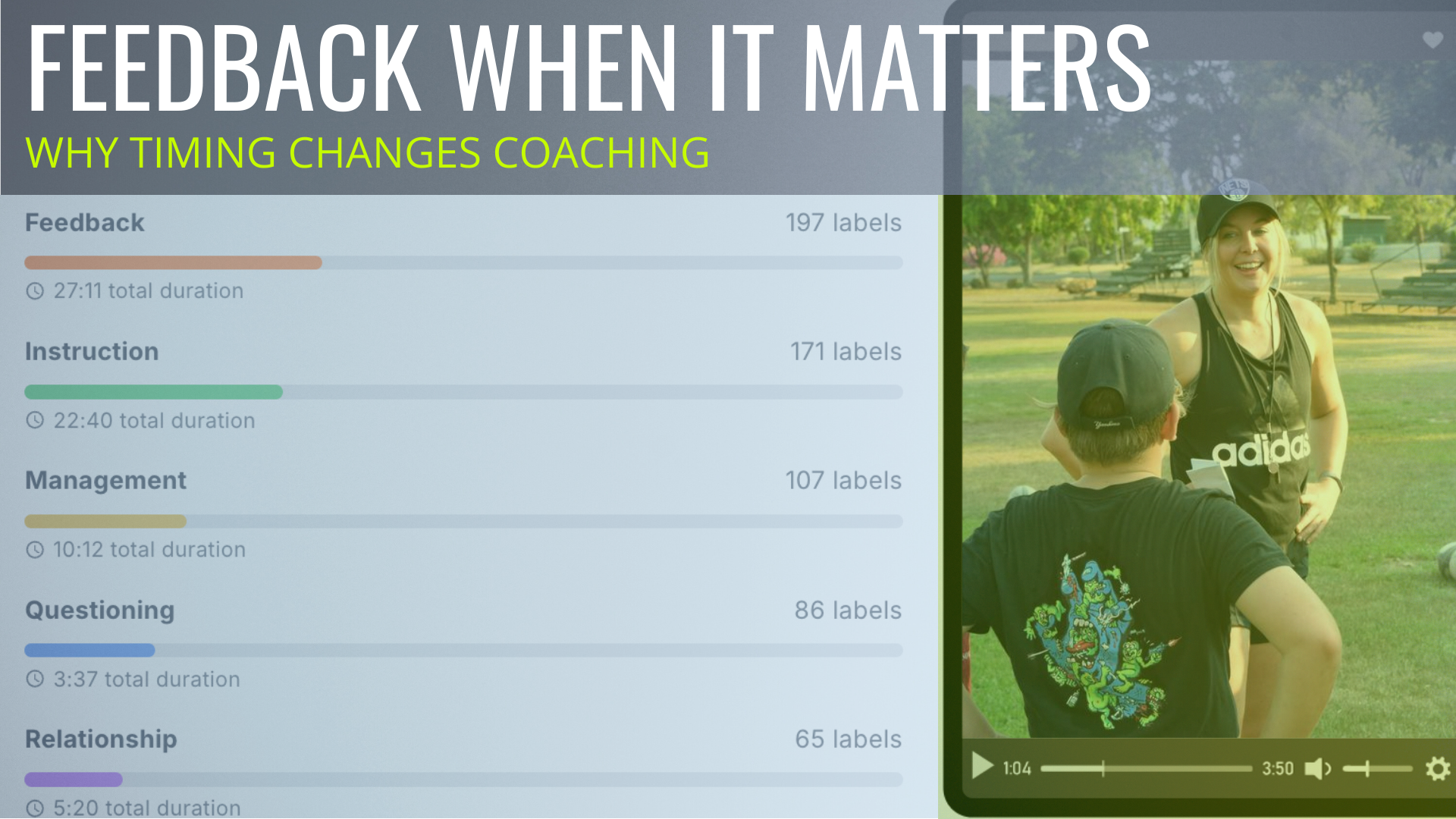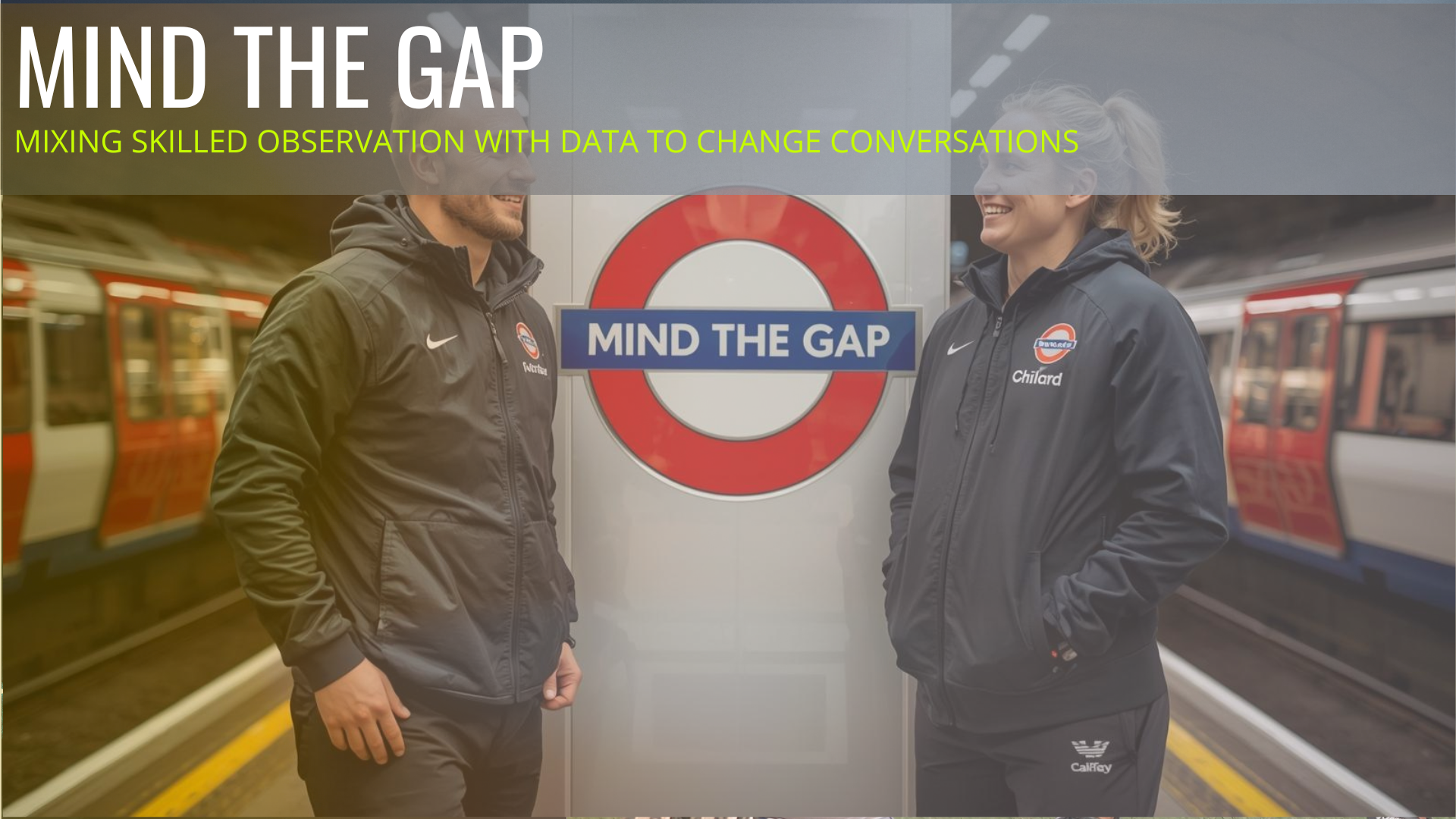Hearing Yourself Differently
If you’ve ever heard a recording of yourself speaking, you’ll know the shock. Do I really sound like that?
Coaching is no different, except here it’s not just the sound of your voice, it’s the patterns in what you say. Language awareness is one of the fastest and most powerful shifts a coach can make. And it doesn’t take long for it to happen when the evidence is right there.
Beyond the Numbers
It’s easy to measure the frequency of certain words: “You said ‘good’ 146 times today.” It’s mildly interesting, maybe even amusing. But on its own, it doesn’t drive change.
What does? Seeing three moments where that praise comforted rather than challenged. Where “good” was used as a full stop, not an opening for thinking.
Directive vs Open Language
Many coaches drift towards more directive language as intensity rises, it’s a natural stress response. But unless you see it in context, you won’t notice the pattern. A session might start with open questions and exploratory prompts, but by the final 10 minutes, it’s barked commands. That shift shapes how players engage, and it’s rarely deliberate.
Case Example
A hockey coach reviews their SAM clips and notices that every time the game pace increased, their language shifted:
- First 15 minutes: “What did you notice there?”
- Last 15 minutes: “Push higher, close that gap!”
Neither is wrong. But knowing when and why the shift happens lets you choose it rather than default to it.
How SAM Makes It Possible
SAM automatically tags patterns in tone, phrasing, and sentiment. It doesn’t just say “you used directive language 42% of the time”, it shows you exactly where and how it happened. Coaches can jump to the three clips that best illustrate the pattern, discuss them with a mentor, and reflect if it matched their intention.
Practical Takeaways
- Record, Don’t Rely on Memory: We all think we remember what we said. We rarely do.
- Focus on Impact: Was your language helping the player think, or just act?
- Balance Praise and Challenge: Comfort has its place; so does stretch.
- Watch for Drift: Compare your first and last 10 minutes of talk time.
Conclusion
Becoming language-aware isn’t about policing yourself, it’s about gaining the freedom to choose how you communicate. And the sooner you can see and hear those moments, the faster you can shape them to your purpose.
Maybe simply reading this has got you thinking about your language.
If you’d like to supercharge that awareness, find out more and try SAM out for yourself, we’d love to hear from you.






